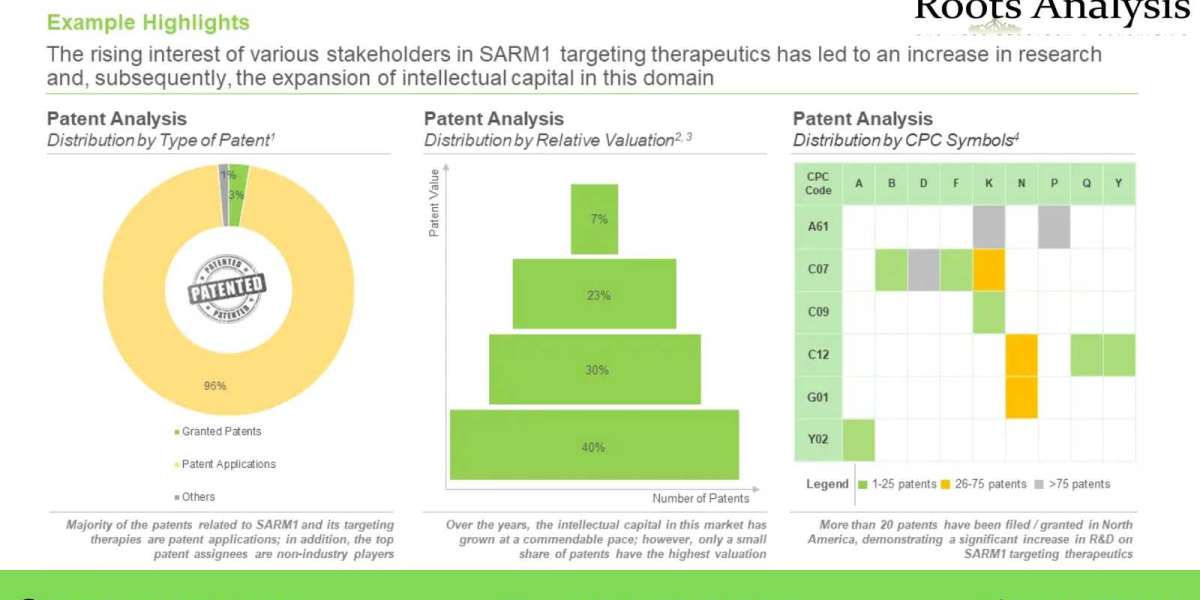In fact, over 6.5 million neurological disorder related deaths are reported annually, globally. Further, according to a report published by the United Nation (UN), close to 1 billion people, across the globe, suffer from various types of neurological disorders, including Alzheimer’s disease, Parkinson’s disease, amyotrophic lateral sclerosis and multiple sclerosis. The growing number of patients suffering from neurodegenerative disorders has imposed a huge burden, in terms of finances as well as resources, on the overall healthcare system. In this context, it is worth mentioning that the annual expenditure associated with neurological disorder care in 2020 was more than USD 655 billion, in the US alone. SARM1 inhibitors have the potential to overcome these challenges and address the unmet need.
Given the fact that majority of the current treatment options have proven to be inadequate, especially for axonal degeneration associated neurological disorders, there is a high demand for highly effective therapeutics targeting neurological disorders. Sterile Alpha and toll / Interleukin-1 Receptor Motif-Containing 1 (SARM1), an NADase enzyme, has been found to play a critical role in inducing axonal degeneration, which is a central pathological feature in various neurodegenerative disorders. Currently, several studies are evaluating SARM1 inhibitors as potential therapeutic agents for the treatment of neurological disorder.
Axonal degeneration is a principal pathophysiological event for the occurrence of neurological disorders. SARM1, an NADase enzyme, depletes the energy stored in axons upon activation and initiates axonal degeneration process. The process leads to generation of metastable pool of damaged axons that remain structurally and functionally viable but are subjected to degeneration in the absence of external intervention. However, it has been reported that small molecules, such as isoquinoline inhibitors (DSRM-3716), can deactivate the phenotype of SARM1 enzyme and prevent axon degeneration. Therefore, inhibition of SARM1 by small molecules can be used to treat axonopathies of the central and peripheral nervous system and allow recovery of metastable pool of damaged axons.
Key Milestones Related to SARM1 Inhibitors
Currently, there are no available treatment options that target axonal degeneration. However, SARM1 has become a potential therapeutic target and several studies are evaluating various SARM1 inhibitors as therapeutic agents for the treatment of multiple neurological disorders. Therefore, SARM1 targeting therapeutics is an evolving area of research within the neurodegeneration and associated diseases domain.
What is the Current Industry Landscape and Upcoming Trends in the Sterile Alpha and TIR Motif Containing-1 Targeting Therapeutics Market?
As per a recent market report by Roots Analysis, around 15 small molecule and biologics are being evaluated in pre-clinical and discovery stages for their potential to inhibit SARM1 pathway.
For additional details, please visit https://www.rootsanalysis.com/blog/sarm1/ or email [email protected]
You may also be interested in the following titles:
- Smart Labels Market: Industry Trends and Global Forecasts, 2022-2035
- AI-based Digital Pathology / AI Pathology Market: Industry Trends and Global Forecasts, 2022-2035
About Roots Analysis
Roots Analysis is a global leader in the pharma / biotech market research. Having worked with over 750 clients worldwide, including Fortune 500 companies, start-ups, academia, venture capitalists and strategic investors for more than a decade, we offer a highly analytical / data-driven perspective to a network of over 450,000 senior industry stakeholders looking for credible market insights.
Contact:
Ben Johnson
+1 (415) 800 3415
[email protected]








